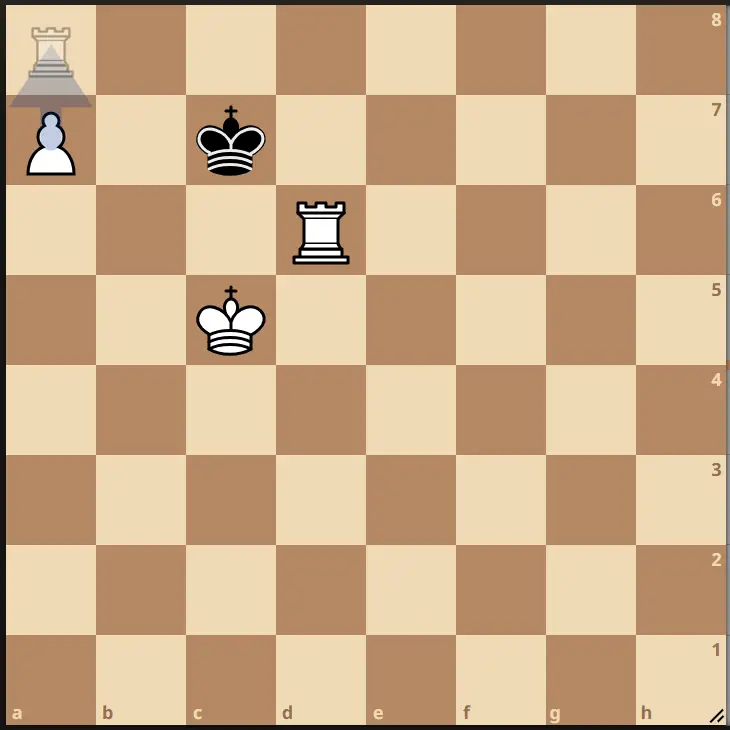Unlocking the intricacies of chess often leads to fascinating strategic choices. Among these is the intriguing decision to promote a pawn to a rook.
In the realm of chess, where each piece carries its distinct value and role, the question arises: Why would you promote a pawn to a rook?
This article delves into the strategic rationale behind this seemingly unconventional move, shedding light on the scenarios and insights that prompt such a decision on the chessboard.
Why Would You Promote A Pawn To A Rook?
A player may choose to promote their pawn to a rook in order to prevent a stalemate from occurring. This is known as underpromotion; a not-so-common strategy where a pawn is promoted to a piece of lesser value than the queen.
Underpromotion can be used in tactical sequences, and is often a surprising factor in the endgame.
In the position below, it would be a mistake for white to promote the a7 pawn to a Queen. This is a wasteful move that leads to stalemate as the king would be left with no legal squares.
Instead, the best move for white is to underpromote to a rook, giving the black king access to the b7 square.
Underpromotion to rook

A part from the rook, there are many other examples of underpromotion which involves other pieces like the knight and bishop. Underpromoting to a knight can be an awe inspiring move to watch over the chess board. For more about knight underpromoting, see article.
Checkmate Is Forced
Another reason why a player may want to underpromote to a rook could simply be a matter of preference. Promoting a pawn to a rook can be a nicer/conserved way to finish off the game in style rather than opting for the typical queen.
If checkmate can be forced with either a queen or rook promotion, then in some cases, the player may want to promote his pawn to a rook because he believes the checkmate is “prettier”.
How To Promote A Pawn To A Rook?
Promoting a pawn to a rook over the board must be executed in the right fashion in keeping with the rules of FIDE.
The pawn on the 7th rank must be advanced to the 8th rank before placing the promoted piece. After the pawn reaches the last rank (1st rank for black) the player can now exchange that pawn for a rook, bishop, knight or queen. For this example, it would be a rook.
“In brief, you are not allowed to place a piece on the queening square without advancing the passed pawn to the last rank.”
The Staircase Method
So you promoted your pawn to a rook, and now all that is left is for you is to finish off the game with checkmate. But how do you achieve this?
The staircase method is a common checkmating strategy employed in the endgame. It involves using two of your heavy pieces [rook(s)/queen(s)].
Checkmating using two queens or rooks is a basic way to win in chess. You can achieve this by following the “Staircase” Method.
This involves moving the enemy king towards the side of the board step by step, taking away its options to move. If the enemy king tries to attack your rook, simply move the rook to the other side of the board and continue your strategy.
Staircase ends in checkmate



